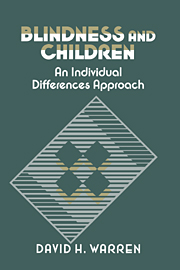Part II - The acquisition of cognitive skills
Published online by Cambridge University Press: 02 December 2009
Summary
Our immediate contact with the physical and social environment comes through the senses. However, we are not restricted to the information available at any one moment. We remember events in prior experience, we learn about situations by experiencing them, we can reason about possible situations, and so on. Humans rely on cognitive skills to deal with the world conceptually. In order to be guided by prior experience, we have to have the ability to learn, to accumulate the implications of that experience, and to bring it to bear on our immediate situation. The cognitive skills involved may be organized in various ways, but we will use the following division.
Language, concept formation, and classification. These cognitive skills are closely related to one another, and any division is somewhat arbitrary. Besides being a means of social communication, language is a cognitive skill. It can serve to guide us through a complex set of operations and help to keep them straight (for example, most people covertly talk to themselves while doing long division). Language can serve to arrange concepts in relation to one another, and to mediate reasoning. This is not to say that all reasoning is done using language as a mediator, but that language is often a part of the reasoning process and should be considered as part of the child's armament of cognitive skills.
Concepts are the stuff of thought. At one level, “concept” implies that the limitations of perception have been escaped. If the child has a concept of an object, then he or she need not have that object physically present in order to think about it.
- Type
- Chapter
- Information
- Blindness and ChildrenAn Individual Differences Approach, pp. 131 - 133Publisher: Cambridge University PressPrint publication year: 1994



